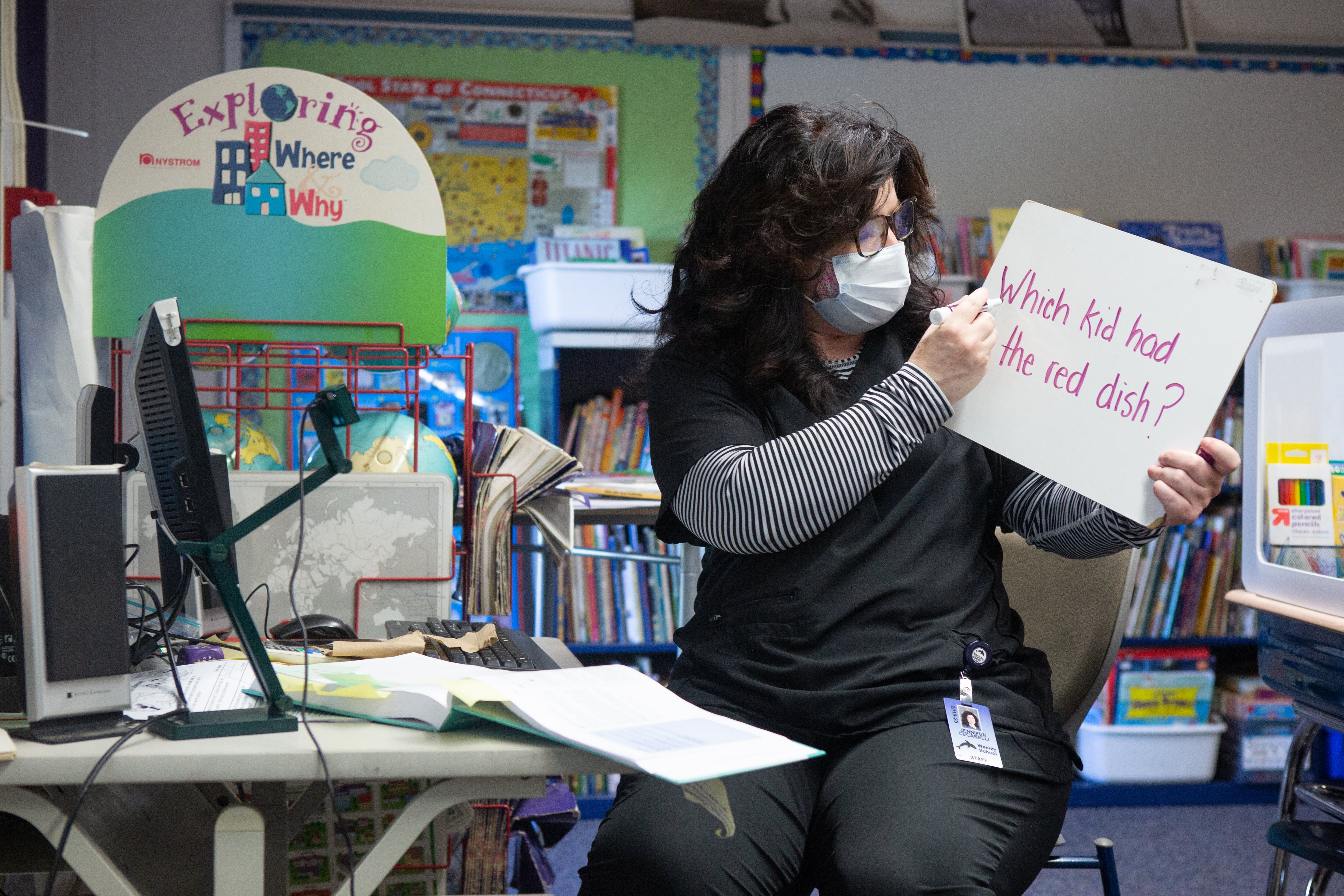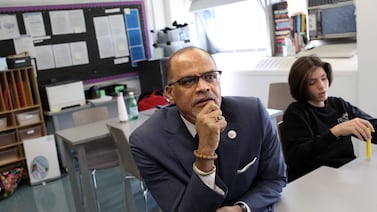A school staffing crunch in Illinois, exacerbated by the coronavirus pandemic, could stretch into the next few academic years, according to a new report.
In a survey of school leaders across the state, 88% of superintendents report a teacher shortage problem and 77% say the shortage is getting worse. A majority of the school leaders who responded believe the crisis will worsen during the 2023 and 2024 school years.
The Illinois Association of Regional Superintendents of Schools partnered with Goshen Education Consulting to survey school leaders on the state’s teacher shortage crisis over the past five years. Superintendents in 660 school districts out of the state’s 852 districts responded to this year’s survey conducted in the fall of 2021.
Across the state, more than 2,000 positions were either unfilled or filled by someone who was not qualified to teach when the survey was conducted. The report found that more than 400 classes in 19% of districts were canceled and 380 classes in 15% had to go online because schools simply had no one to teach them in person.
Mark Klaisner, president of the Illinois Association of Regional Superintendents of Schools, said in an interview on Tuesday that he was surprised to find that school leaders believe that the crisis will remain over the next few years. According to Klaisner, even as the state has received over $7 billion dollars in federal COVID relief funding, it doesn’t seem to be enough to turn the tide in this crisis.
“COVID has made it so difficult that money is not the issue or the discussion,” said Klaisner. “It’s much more about trying to find quality people to provide a worthwhile education for kids.”
While all parts of Illinois are struggling with the teacher shortage crisis, rural districts are shouldering a larger burden, the report shows. In west central and east central Illinois, more than 90% of schools are reporting shortages. School leaders reported that geographic locations, salary and benefits, and pension were the top three reasons why districts struggled to recruit more teachers.
The COVID-19 pandemic also had a large impact on teacher preparation time and worsened the substitute shortage. The survey found more than 90% of school leaders report that the substitute shortage increased over the course of the pandemic. In response to the shortage, 80% of districts said they pulled teachers away from preparing for their classes.
The data comes on the heels of the Illinois state board of education’s annual report, which showed that the number of educators steadily increased over the past five years. The state saw an increase of 1,251 more Hispanic teachers and 184 more Black teachers during the 2020-2021 school year, but the vast majority of teachers – 82% – are white.
The state board is working with 24 colleges and universities throughout the state to recruit and retain teachers or color. The state board is also looking for ways to get more teachers of color to pass the state’s licensure exams and has invested money into early career teacher mentoring programs.
Before the omicron surge, the overall teacher vacancy rate in Chicago Public Schools, the state’s largest district, was relatively on par with that of previous years, at 2.9% as of Dec. 1. But that data, which shows unfilled permanent positions, obscures sizable COVID disruptions from staff who have contracted the virus and had to call out sick.
The district, which said it is working to boost its substitute teacher pool, recently began offering a new incentive of $1,000 per month to substitutes who work 15 or more days in a month, including Mondays and Fridays. That incentive was originally offered for the month of January, but the district agreed to extend it through the end of the third quarter as part of a deal with the Chicago Teachers Union. Substitute teachers who work in high-need schools — where turnover is often higher — can receive an extra $45 per day, under the agreement.
Klaisner said one school district that he works with is currently advertising substitute teaching positions to parents to help with the shortage.
The Illinois Association of Regional Superintendents of Schools suggested policy recommendations for the state to implement, including increasing funding throughout the teacher pipeline to get more young people into the field and create more support to retain teachers; streamlining requirements for teachers and substitutes; and expanding programs that recruit and retain teachers of color. The report also said the state should help schools find more candidates to meet the short-term need for educators.







